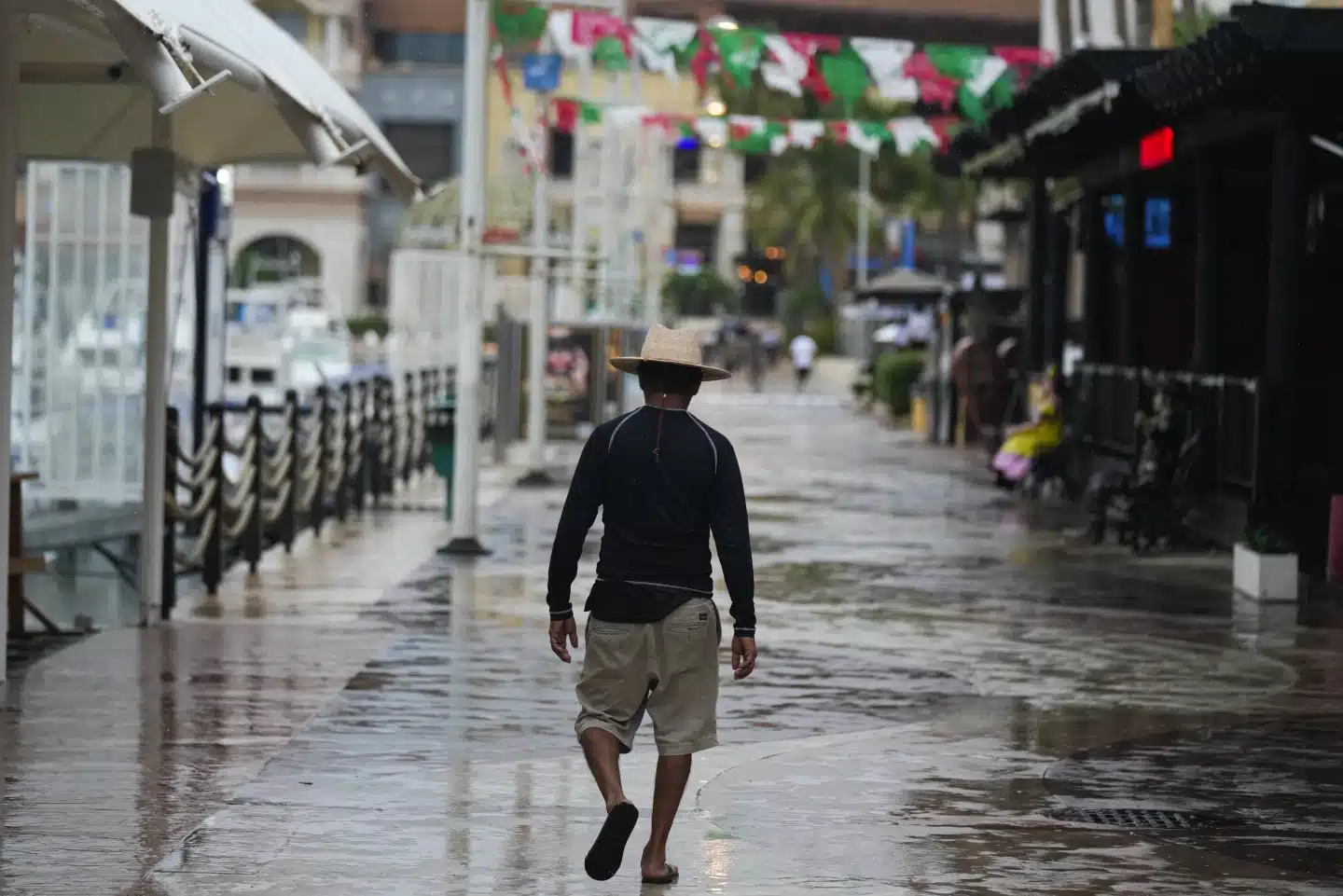Science
Hurricane Norma Takes Aim At Mexico’s Los Cabos Resorts, As Tammy Threatens Islands In The Atlantic

CABO SAN LUCAS, Mexico— Residents of the resorts in Los Cabos, Mexico, hurried to make preparations as Hurricane Norma approached the southernmost point of the Baja California Peninsula in anticipation of making landfall. On Saturday, Hurricane Tammy was in the Atlantic and threatened to inundate the Lesser Antilles.
Following Norma’s resurgence and reclassification as a significant storm on Friday, government personnel erected banners cautioning individuals against attempting to traverse gullies and stream beds, while businesses in Cabo San Lucas nailed plywood sheets over their windows.
Norma had diminished by early Saturday and was downgraded to Category 1 on the hurricane wind scale. The storm, which had winds of 85 mph (140 km/h) and was moving north at 8 mph, was just offshore 25 miles west of Cabo San Lucas, as the U.S. National Hurricane Centre reported.
It was anticipated that the hurricane would maintain its course until the evening, at which point it would shift northeastward and decelerate until Monday. As a tropical storm, a weakened Norma would approach the mainland of Mexico along the western Pacific coast of Mexico, according to the forecast trajectory.
Its sluggish velocity increased the likelihood of catastrophic inundation. Six to twelve inches of precipitation, with a maximum of eighteen inches, was anticipated from Norma in southern Baja California and a large portion of Sinaloa state.
Saturday morning, approximately 1,500 individuals were sheltered in shelters in Baja California, as the National Civil Protection Agency reported.
The Los Cabos Civil Defence agency advised inhabitants to remain indoors throughout the day due to the increasing gusts and precipitation. Assembled personnel hurriedly evacuated individuals from low-lying regions and transferred them to shelters.
Hurricane Norma Takes Aim At Mexico’s Los Cabos Resorts, As Tammy Threatens Islands In The Atlantic
Early Saturday morning, police in San Jose del Cabo rescued two individuals from their vehicle after a swift-moving stream swept it away. Some informal settlements, situated away from tourist-serving hotels, had already become cut off by the rising water. Some communities experienced power outages and internet outages.
By late morning, except for sporadic military patrols, the area’s streets were essentially deserted and covered in palm fronds and other detritus. Forceful winds caused trees, traffic signs, and power lines to sway.
The National Hurricane Centre of the United States reported that hurricane conditions had already developed in the southern portions of the peninsula.
The hotels in Los Cabos, predominantly visited by international tourists, remained approximately 75% full, according to Maribel Collins, the state tourism minister of Baja California Sur. There were no significant efforts by visitors to depart en masse.
Saturday, airports were closed by the local civil defense office, so there was no way out.
On Friday, the local hotel association estimated that Cabo San Lucas and San Jose del Cabo were home to around 40,000 visitors.
While at the marina in Cabo San Lucas, José Ceseña was removing the vessel from the water that he typically employs to transport travelers on his tours. As the port was inaccessible to vessels and a hurricane approached, he stated that jeopardizing his vessel was not worthwhile.
The state commander of the National Guard, Homero Blanco, stated that orders had been issued to close the beaches at the resort and that Guard personnel had been dispatched to clear the shoreline of individuals.
To assist with storm preparations, the federal government deployed 500 marines to the resort, and municipal officials stated that 39 emergency shelters could be opened if necessary.
The U.S. National Hurricane Centre reported that Hurricane Tammy had winds of 85 mph (140 kph) in the Atlantic. The islands of Guadeloupe, Antigua, Barbuda, Montserrat, St. Kitts and Nevis were all issued hurricane watches. Tammy was travelling at 8 mph (13 km/h) northwest.
Hurricane Tammy was situated in the Atlantic Ocean, approximately 40 kilometres north-northeast of Guadeloupe and 50 kilometres southeast of Antigua, a Caribbean island.
As it approached the Lesser Antilles on Saturday, Tammy was anticipated to maintain hurricane intensity and possibly intensify slightly before passing by Guadeloupe, Antigua, and Barbuda. Guadeloupe and Martinique are both overseas departments of France.
According to a dispatch from the hurricane center, a substantial portion of the Lesser Antilles is likely to experience heavy rainfall and flooding.
Localities anticipated Tammy’s approach two weeks after Tropical Storm Phillippe passed through Antigua and Barbuda, dumping six to eight inches of precipitation and plunging both islands into darkness. It was predicted that the gradual system would deposit as much as 12 inches of precipitation over a twin-island nation still reeling from the devastation caused by Hurricane Irma in 2017 and the recent wind damage and inundation from Philippe.
“Therefore, this indicates that the earth remains somewhat saturated, and further precipitation increases the likelihood of flooding,” stated Prime Minister Gaston Browne in a Friday afternoon nationwide broadcast. Residents were encouraged to take every precaution to safeguard their lives and property.
To enable employees to prepare, government offices, banks, and most non-retail businesses closed early on Friday. The desperation of St. John’s residents to stock up on essentials caused gridlock in the vicinity of well-known retail centers and supermarkets.
Authorities in charge of disaster management at the local level predicted the opening of forty shelters in communities across the nation.
SOURCE – (AP)





























